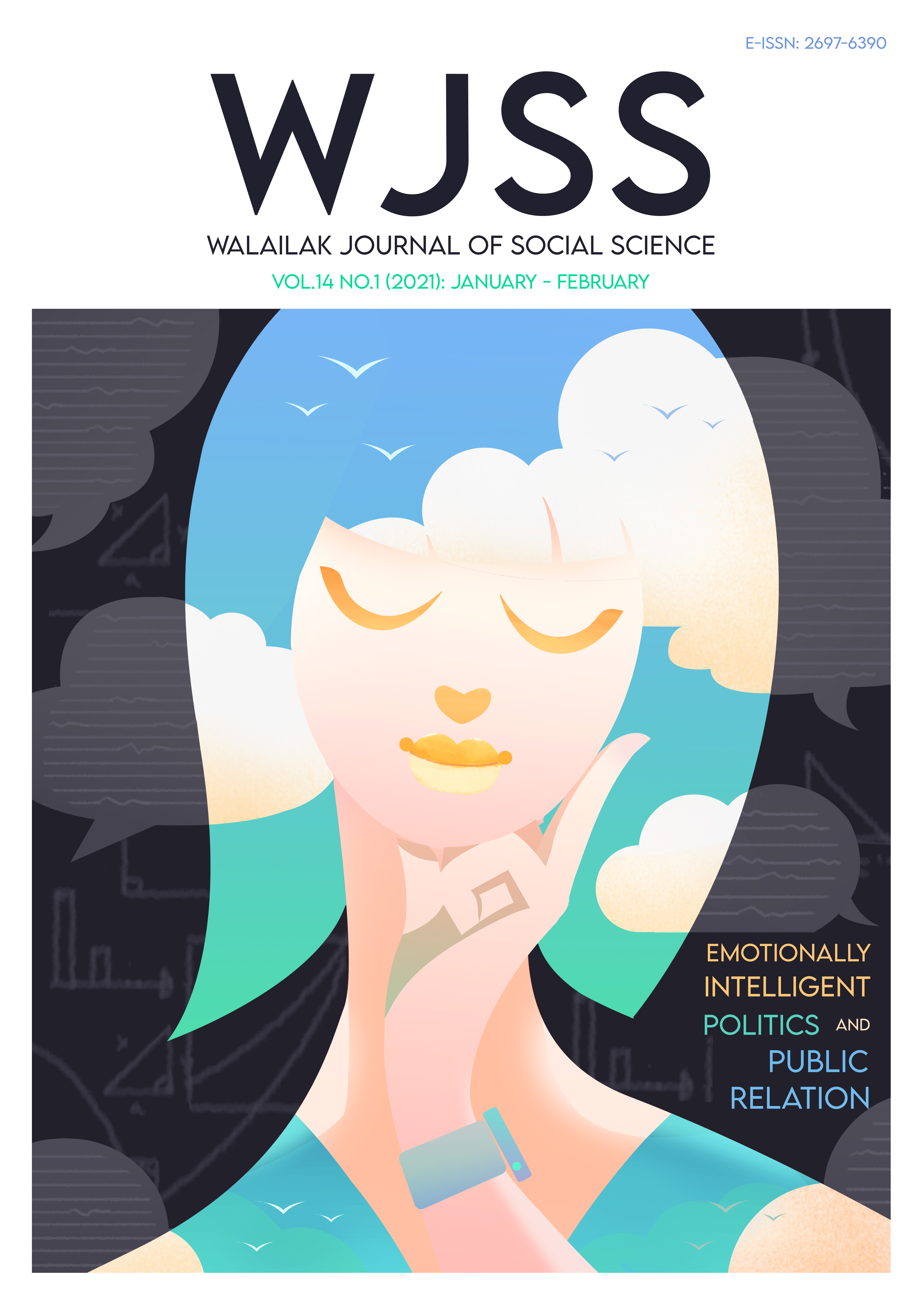International Program Students’ Attitudes towards Using English Language Movies to Develop English Communication Skills
Main Article Content
Abstract
The purpose of this study was to investigate International Program students’ attitudes towards using English language movies to develop their English communication skills. The participants included 128 undergraduate students who are studying in an International Program. The instrument used to collect the data was a questionnaire. The results revealed that English movies are an effective tool for developing English communication skills. In addition, the differences in students’ years of studying English, level of using English, and frequency of using English in everyday life affected their attitudes towards using English movies with English subtitles to develop their English communication skills.
Article Details
Copyright: CC BY-NC-ND 4.0
References
Ayu, L. P. (2016). YouTube videos in teaching listening: The benefits in experts’ views. Research in English and Education, 1(2), 152-160.
Baltova, I. (1994). The impact of video on the comprehension skills core French students. Canadian Modern Language Review, 50, 507-531.
Chang, C. C., Tseng, K. H., & Tseng, J. S. (2011). Is single or dual channel with different English proficiencies better for English listening comprehension, cognitive load and attitude in ubiquitous learning environment? Computers & Education, 57(4), 2313-2321.
Harley, B., Howard, J., & Roberge, B. (1996). Teaching vocabulary: An exploratory study of direct techniques. The Canadian Modern Language Review, 53, 281-304.
Kretsai, W. (2014). Effect of using video materials in the teaching of listening skills for university students. International Journal of Linguistics, 6(4), 200-212.
Meskill, C. (1996). Listening skills development through multimedia. Journal of Educational Multimedia and Hypermedia, 5(2), 179-201.
Rashid, K. T., & Jabbar, D. S. (2017). Listening skills development through multimedia. International Journal of Social Sciences and Educational Studies, 3(4), 185-196.
Safranj, J. (2015). Advancing listening comprehension through movies. Procedia-Social and Behavioral Sciences, 191, 169-173.
Stewart, M., & Pertusa, I. (2004). Gains to language learners from viewing target language closed-captioned films. Foreign Language Annals, 37(3), 438-447.
Thomlison, T. D. (1984). Relational listening: theoretical and practical considerations. In Proceedings of the Annual Meeting of the 5th International Listening Association (pp. 1-30). Scottsdale, Arizona.
Turner, K. J. (2004). Insinuating the product into the message: an historical context for product placement. Journal of Promotion Management, 10(1/2), 9-14.
Worrawattananukul, A. (2017). APIU learners’ attitudes towards using English movies for developing listening comprehension skills (Master’s thesis). Thammasat University, Bangkok: Thailand.


